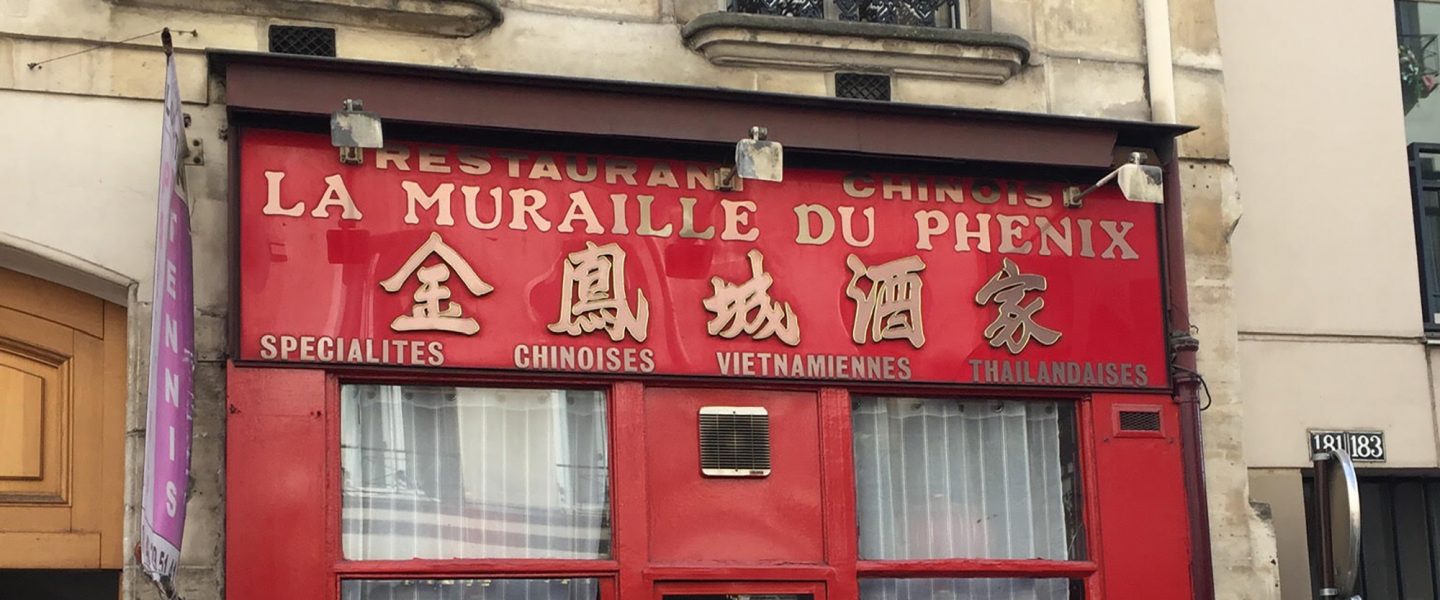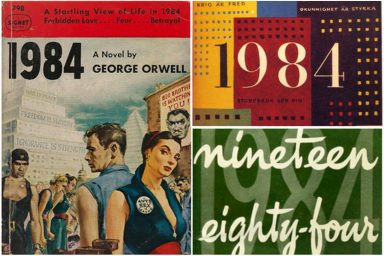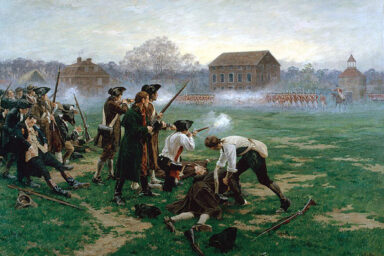J.B. Miller explores the surprising gastronomic delights of Paris.
|
Listen To This Story
|
I’m currently visiting Paris, a celebrated gastronomic paradise, and my favorite restaurant is a Chinese dive on the rue Saint-Jacques frequented by noisy students from the Sorbonne around the corner. There you can get a three-course set menu for under 10 euros. I have relatives who wouldn’t set foot in a place like this, but it’s my kind of place, what my children call a “daddy café.” (“Mommy cafés” tend to be a lot fancier and probably pass more food inspections.)
When I was in primary school in London back in the olden days, the lunches were by any reasonable standard uneatable. I remember one repeated offering: tiny cubes of plasticated potatoes with a small slab of tough roast beef, dribbled with a pungent spill of gravy.
I loved it.
To this day I have a weakness for institutional food and cheap grub, my stomach growls affectionately when I pass a down-market caff, its all-day breakfast specials as gripping to me as the results of the last race at Cheltenham. I’m the opposite of a food snob, I’m a food democrat, a proud cuisinal peasant, a proletariat of chow.
It’s not that I don’t appreciate good food. I’ve been taken to superb establishments in London such as the River Café, Launceston Place, The Ivy, Pig on the Beach. Perhaps my finest dining experience was a taster’s menu at L’Enclume, a magical Lake District bistro featured in Michael Winterbottom’s epicurean film The Trip (2010). I know what good food is. But I also know what less-good food is, and I think it’s good too. So, left to my own devices, I’d just as soon order a roasted duck noodle soup from Wong Kei in London’s Chinatown (£4.80, at last count). The Foyles café is another lunch bargain, offering a full meal with wine for little over a tenner. Meeting a colleague in the West End, I’d forgo the pricey Ivy for a ramen at Taro on Brewer Street, another feast for a ten-spot.
It’s true, I’ve hit some low notes. I once left a fiver on the table at a Chinese restaurant just off Tottenham Court Road and tip-toed out after a single spoonful (the place is thankfully now closed). So there are plates that I’ve left unfinished, but that’s truer in upmarket joints than dives. I don’t always understand the complicated nouvelle cuisine (now, no doubt, nourriture passé), and resent the tiny portions situated architecturally on enormous plates, making the food look even smaller. If the grub is good, I want lots of it, and a bit of noise in the background, please. You can’t always judge a book by its cover, and a clean, quiet dining room doesn’t necessarily denote a spotless kitchen. But ignorance can be bliss, and I can enjoy a meal just this side of food poisoning, every mouthful a roll of roulette.

Nouvelle cuisine, how satisfying. Photo credit: Jérôme Decq / Flickr (CC BY 3.0)
Like The Spectator’s “Low Life” columnist, newspapers should have a “low restaurant” critic, to appraise those dives that offer good value for money — or just a cheap way to go to the hospital. But then, I like hospital food too. At Royal Brompton, I finished every morsel on my plate (I wasn’t there for gastric issues).
On planes I remain puzzled when fellow passengers leave so much of their little foiled-wrapped delicacies uneaten. When handing over my tray to the flight attendant, the microwaved chicken curry and rice polished off the plate, I ask them to relay my compliments to the chef. (I also secretly pine for praise for finishing my entire meal down to the last crumb. This is never forthcoming.)
Watching old black and white movies, I often freeze-frame a scene in a restaurant, scanning the prices chalked on the wall. I’m fascinated by the sequence in Brief Encounter (1948) when Celia Johnson runs into Trevor Howard at the Kardomah Café (a chain of tea rooms popular until the 1960s). A small chamber trio is even providing music, with a comically earnest cellist — a subject of bonding mirth for the potential lovers — and the lunch seems to come to two shillings (about 25 cents) each, plus a sixpence tip. The pennies went far in those days — though apparently people never had enough of them.
Being a cheap date can cause some consternation when I’m the one hosting. There’ve been occasions when I mistook my own cut-rate food interest with others’ lack of high tolerance for the low bar. Thus, when I was dating my future wife in New York and took her to my favorite Bleecker Street Italian joint — a place with tablecloths and waiters in jackets! — she wasn’t impressed. It was the poshest place I frequented, though the most expensive thing on the menu (spaghetti mare e monte) was only 15 bucks. We got married anyway, and now she chooses the restaurants.
So it’s when I’m alone that I sneak out to those all-day breakfast cafés in London. Still, I’ll admit I’ve graduated from Hunger Break’s All Day Breakfast in a can. When I discovered this technical marvel — the way they did the egg is difficult to explain without bringing in a physicist — I was all over it. With its pull-tab cover it was a bit like uncorking a hand grenade. (Their other tinned wonders included Mixed Grill and the Big BBQ.) But when you get married it’s time to put away childish things, and that meant packing in my interest in speed cooking and food portability. Even a microwave is banned in our house, which has taken any number of potential fast-food delicacies off the table (quickly).
So I’m a servant of two masters: the high and the low, the Michelin star and the dead planet. But given the choice, to be honest? I’d go for that 10-euro menu at my Chinese joint. Even in Paris.
***
J.B. Miller is an American writer living in England, and is the author of My Life in Action Painting and The Satanic Nurses and Other Literary Parodies.




